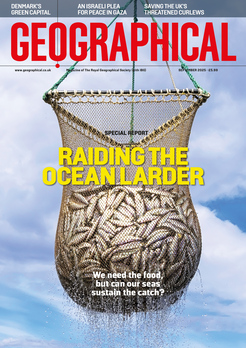
Will insects be the superfood of the future? Experts say that eating insects is good for us and good for the environment.
By
‘Mum, what’s for dinner’? Usually shouted out from the opposite end of the house, it’s a question that’s heard daily by almost every parent. But, imagine that instead of replying that it’s pasta or some other family mealtime classic, the response was ‘It’s your favourite. Fried crickets’
Today, it might seem unlikely that any European child would delight in eating crickets, mealworms or any other insect. But, if the UK Edible Insect Association have anything to do with it, we will all soon be looking forward to a Friday evening cricket burger, and we’ll be healthier and the environment better off for it.
A new white paper addressing the effective and sustainable regulation of insects in the UK, which was released by the UK Edible Insect Association this week, sets out some of the reasons why bugs are the superfood of the future.
According to the report, food production currently accounts for around one-third of greenhouse gas emissions and is a major contributor to biodiversity loss. By 2050 the world population is projected to hit almost 10 billion, and consequently, the demand for protein is likely to exceed any available supply. One solution to this crisis could be an increased consumption of insects, and the UK Edible Insect Association aren’t the only one to think so. The UN Food and Agriculture Organisation (FAO) agrees, and a report published by them in 2020 states, ‘Edible insects contain high-quality protein, vitamins and amino acids for humans. Besides, they emit less greenhouse gases and ammonia than conventional livestock.’
Although many different kinds of insects can be eaten, at present in the UK and much of Europe, the most popular insect food is crickets. And there’s good reason for that. According to UK insect food producer Yum Bug, crickets contain considerably more protein than beef, pork and chicken, with 100 grammes of crickets containing 69 grammes of protein compared to between 17 and 19.5 grammes for chicken, pork and beef. That same 100 grammes of crickets also contains more than ten times the amount of calcium and considerably more iron than chicken, pork and beef. But, by contrast, nearly half the amount of fat of pork and beef and a third less than chicken.
And eating insects isn’t just good for you. Yum Bug states that when it comes to carbon dioxide emissions per kilo, insect production produces a mere 1.6 grammes of carbon dioxide emissions per kilo compared to 2850 grammes for beef, 1130 grammes for pork and 300 grammes for chicken. They also require considerably less space, water and food.
According to the UK Edible Insect Association, there’s good financial reason to ramp up commercial insect production, with the edible insect market set to grow from $189 million in 2022 to $856 million by 2029.
But, of course, there are a few problems. Namely, that many people in Western countries instinctively recoil in disgust at the idea of eating insects. But, according to Yum Bug, we are the exception and that worldwide, over two billion people in 80 per cent of the countries of the world regularly eat insects.
If the UK Edible Insect Association can change entrenched attitudes, then perhaps it won’t be too long before the answer to what’s for dinner really might be ‘It’s your favourite. Fried crickets’.
Related articles:




